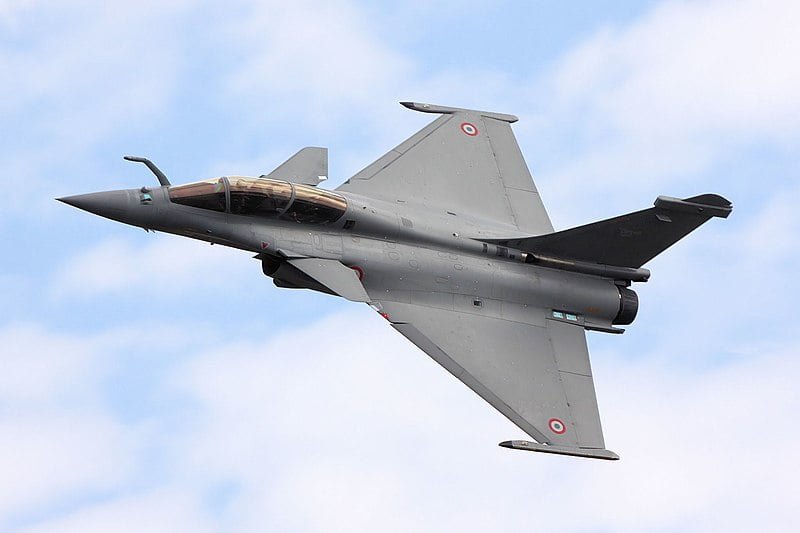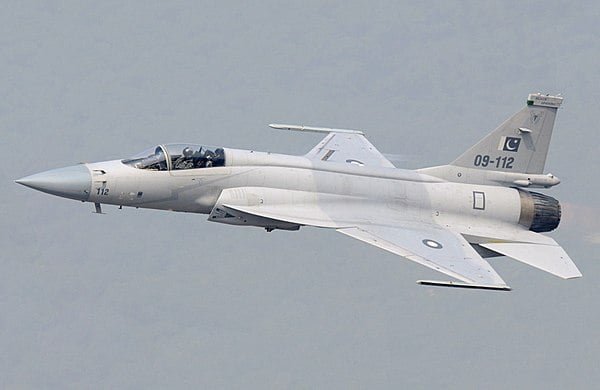Dassault Rafale vs JF-17 Thunder: Hello defence aspirants! Fighter jets comparison is something that we all love to hear about, and if it’s a comparison of India and Pakistan’s fighter jets the excitement doubles.
In this blog post, we dive into the intense comparison between the Dassault Rafale and the JF-17 Thunder to shed light on their respective features, performance capabilities, and combat potential.
We explore the details of their design, avionics systems, weapons capabilities, and operational versatility. By examining their technical specifications and operational histories, we aim to uncover which aircraft possesses the edge in various critical aspects of modern air combat.
Dassault Rafale

The Dassault Rafale is a cutting-edge multi-role fighter aircraft that has gained international acclaim for its advanced technology, exceptional performance, and versatility. Developed by the French aerospace company Dassault Aviation, the Rafale represents the pinnacle of modern military aviation.
Design and Features:
The Rafale boasts a sleek and aerodynamically optimized design, featuring a delta wing configuration and canard surfaces for enhanced manoeuvrability and stability.
It is Dual Engine 4th Gen advanced multirole aircraft. It is 50 feet long and 35.4 feet high with a wingspan of 17.3 feet. It is equipped with advanced liquid-cooled radar with 838 TIR Modules and the radar has a range of 180 km.
Its airframe is constructed with composite materials, making it lightweight yet durable. The aircraft incorporates advanced avionics systems, including a state-of-the-art glass cockpit, a wide range of sensors, and advanced data fusion capabilities.
Performance and Capabilities:
The Rafale excels in both air-to-air and air-to-ground missions, making it a true multi-role fighter. It is equipped with an impressive range of weaponry, including air-to-air missiles, air-to-ground missiles, precision-guided munitions, and cruise missiles.
The aircraft’s powerful engines provide exceptional speed, manoeuvrability, and range, allowing it to perform a wide array of missions with precision and effectiveness.
With a speed of 3700 km/hr, it can carry a payload of up to 24,500 kg. It has 14 hard points to carry missiles. It can also carry nuclear missiles. It is equipped with MICA missiles with a range of 80-90 km.
Operational Versatility:
The Rafale has demonstrated its operational versatility through successful deployments in various conflicts and missions around the world. It has been employed for air defence, ground attack, reconnaissance, and maritime strike missions, showcasing its adaptability and effectiveness in different scenarios.
International Success:
The Rafale has been adopted by the French Air Force and Navy as their primary fighter aircraft, and it has also secured export orders from other countries. Its performance and capabilities have been praised during multinational exercises and real-world operations, solidifying its reputation as one of the world’s leading fighter aircraft.
Future Upgrades:
Dassault Aviation continues to enhance the Rafale’s capabilities through continuous research and development. Planned upgrades include improved avionics, enhanced stealth features, increased payload capacity, and integration of next-generation weapons systems, ensuring that the Rafale remains at the forefront of technological advancements in military aviation.
The Dassault Rafale represents a formidable force in the world of military aviation. Its advanced design, impressive performance, and operational versatility make it a highly sought-after aircraft for air forces around the globe. With its continuous evolution and incorporation of cutting-edge technologies, the Rafale continues to demonstrate its superiority and maintain its position as a leading fighter aircraft in the 21st century.
JF-17 Thunder

The JF-17 Thunder, also known as the FC-1 Xiaolong, is a modern multi-role fighter aircraft jointly developed by the Pakistan Aeronautical Complex (PAC) and Chengdu Aircraft Industry Corporation (CAC) of China. The JF-17 Thunder has gained recognition for its cost-effectiveness, technological advancements, and operational capabilities.
Design and Features:
The JF-17 Thunder features a sleek and aerodynamically efficient design with a delta wing configuration and canard surfaces, offering enhanced manoeuvrability and stability.
It is a single Engine 4th Gen multirole aircraft. It is 49 feet long and 31.0 feet high with a wingspan of 15.5 feet. It is equipped with air-cooled KLJ-7 radar which is not as efficient as the liquid-cooled radar of Rafale also it has low TIR modules than Rafale which makes it less efficient in Beyond Visual Range fight in comparison to Rafale.
Its airframe is constructed with lightweight materials, such as composites, to ensure agility and fuel efficiency. The aircraft incorporates advanced avionics systems, including a modern glass cockpit, digital flight controls, and a range of sensors.
Performance and Capabilities:
The JF-17 Thunder is designed to excel in a variety of combat roles, including air superiority, ground attack, and interception missions. It is equipped with PL-10 missiles which have a range of 20-23 km. The Thunder’s engines provide it with impressive speed, manoeuvrability, and range, enabling it to effectively carry out diverse missions.
JF-17 has a maximum speed of 1909 km/hr and can carry a payload of 12,427 kgs which is half of Rafale. Also, JF-17 does not have nuclear capabilities.
Operational Versatility:
The JF-17 Thunder has demonstrated its operational versatility by participating in various national and international exercises, showcasing its capabilities in different scenarios. It has proven its effectiveness in combat missions, including counter-terrorism operations and air defence patrols.
Cost-Effectiveness and Accessibility:
One of the key advantages of the JF-17 Thunder is its cost-effectiveness. The aircraft offers advanced features and capabilities at a relatively lower cost compared to other contemporary fighter aircraft, making it an attractive option for air forces with budget constraints.
Additionally, the Thunder’s technology transfer and production capabilities allow partner countries to have access to advanced aviation technology and promote self-sufficiency in defence production.
Ongoing Development:
The JF-17 Thunder continues to undergo improvements and upgrades. The Block 2 variant introduced enhanced avionics, increased payload capacity, and improved data links.
The upcoming Block 3 version is expected to feature more advanced systems, including an Active Electronically Scanned Array (AESA) radar, helmet-mounted display, and beyond-visual-range air-to-air missiles, further enhancing the aircraft’s combat capabilities.
Dassault Rafale vs JF-17 Thunder: Comparison Table
| Features | Dassault Rafale | JF-17 Thunder |
| Dimentions | Length: 50 feet Wingspan: 17.3 feet Height: 35.4 feet | Length: 49 feet Wingspan: 15.5 feet Height: 31.0 feet |
| Engine | Dual Engine | Single Engine |
| Speed | 2130 Km/hr | 1909 km/hr |
| Payload capacity | 24,500 kg | 12,474 kg |
| Hard points | 14 | 7 |
| Missiles | MICA Missiles, Range 50-80 km | PL-10 Missiles, Range 20-25 km |
| Thrust-Weight Ratio | 0.95 | <1 (With Payloads) |
| Turn Rates | +10 G | +9 G |
| Instantaneous Turn Rates | 36.4 degree/sec | 24.4 degrees/sec |
| Sustained Turn Rates | 23.5 degrees/sec | 20 degrees/sec |
| Generation | 4th Gen | 4th Gen |
Conclusion
So this was our comparison of the Dassault Rafale vs JF-17 Thunder from the specs discussed it is very clear that the Dassault Rafale is a clear winner in Dassault Rafale vs JF-17 Thunder. Share the post with your friends and subscribe to notifications for further updates!





